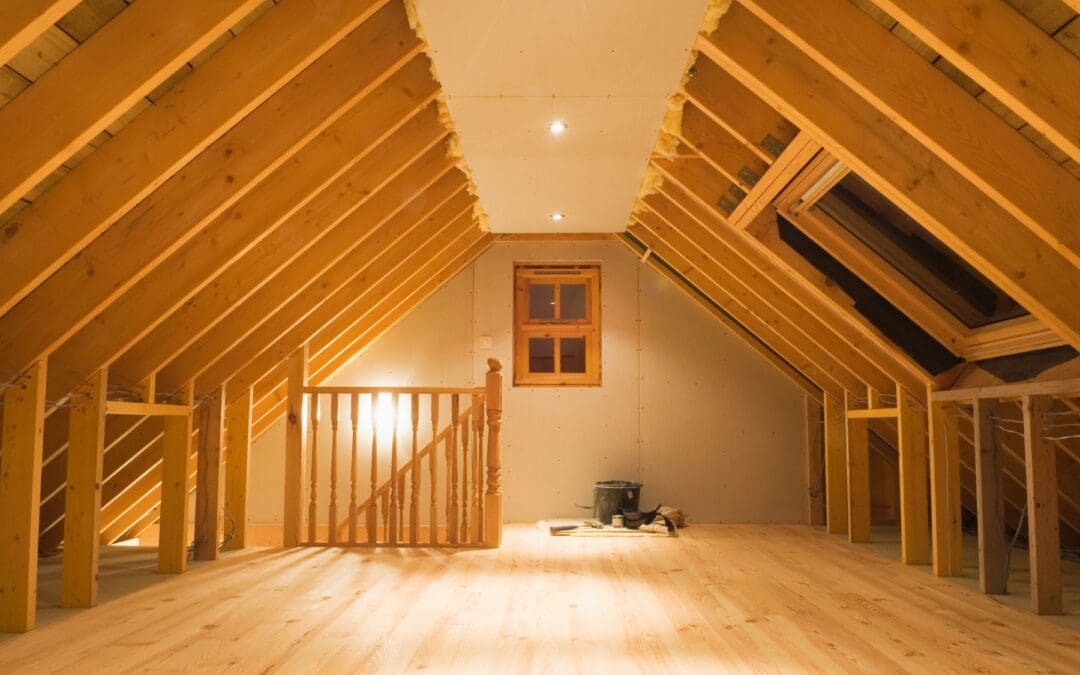Homeowners, it’s time to clear out the dust and realize the value right above your head. Attic Improvements are one of the smartest things you can do, instantly lowering your utility bills, improving your air quality, and making your whole home better to live in.
Attic Improvements: The Foundation of Comfort
When it comes to attic improvements, the dynamic duo of insulation and ventilation must take center stage. They work together to maintain a stable, moderate temperature in the space, which is critical for the rest of your home.
Optimizing Your Insulation
Effective insulation acts as a thermal barrier, slowing the transfer of heat. In the summer, it keeps the blistering attic heat from radiating down into your living spaces. In the winter, it keeps the expensive heat you’ve generated inside from escaping through the roof. The key metric to understand is R-value, which measures thermal resistance. The higher the R-value, the better the insulation performance.
For most climates, simply adding more insulation to meet modern standards is a significant improvement; however, before blowing in new cellulose or laying down fiberglass batts, you must address air sealing. Insulation slows heat transfer, but air movement bypasses it entirely. Search the attic floor for any penetrations—plumbing stacks, electrical wires, ceiling fixtures, and the attic hatch itself—and seal them meticulously with caulk or expanding foam. Air sealing before insulating can often yield better results than adding a massive amount of unsealed insulation.
Ensuring Proper Ventilation
Insulation keeps heat out of your living space, and ventilation gets that heat out of the attic. A properly ventilated attic pulls fresh air in at the soffits and exhausts hot, moist air out at the ridge. This continuous airflow is vital for several reasons. It helps keep the attic temperature closer to the outdoor temperature, which prevents ice dams from forming on the roof in winter and reduces the load on your air conditioner in summer. Furthermore, ventilation removes moisture, which is crucial for preventing mold growth and protecting the structural integrity of your roof decking and rafters.
Inspect your existing system. Are the soffit vents blocked by insulation? Is the ridge vent free of debris? Sometimes, simply clearing blocked vents can drastically improve the airflow. A balanced system—where intake and exhaust are roughly equal—is the goal for maximum effectiveness.
Attic Safety and Accessibility
An improved attic is also a safe and accessible attic. Many homeowners access this space rarely, but when they do, a proper entry point and safe flooring are non-negotiable.
A flimsy, uninsulated attic hatch is a major energy leak. Upgrading to a quality, weather-stripped and insulated attic stair or hatch is a straightforward improvement that pays immediate dividends. If you install a pull-down ladder, ensure it is correctly rated for weight and installed securely into the framing. Remember, the ladder itself must be sealed and insulated to prevent it from becoming a thermal hole in your ceiling. If you intend to use the attic for storage, you must have safe, designated walkways. Never place weight directly on the ceiling drywall below.
Final Checks: Ducts and Equipment
Before sealing up your newly insulated and ventilated attic, take a critical look at any mechanical systems that reside there.
If your HVAC ductwork runs through the attic, it needs to be perfectly sealed and insulated to the same high standards as the attic floor. Leaky, uninsulated ducts can lose a significant amount of heating and cooling, forcing your system to work harder and longer. Sealing duct joints with mastic (a specialized sealant) and then wrapping them with a thermal jacket is an improvement that dramatically boosts your HVAC efficiency.
By viewing the attic as a system rather than a junk drawer, you empower your entire home to be more comfortable, durable and energy-efficient. These improvements are foundational, offering returns not just on your utility bill, but on the long-term health of your home.
Attic Improvements: Frequently Asked Questions
How do I know if my attic insulation is sufficient?
The best way is to check the depth. If the insulation is below the top of the floor joists or is uneven and sparse, it’s likely insufficient. An energy auditor can provide an exact R-value assessment, but generally, most homes in the United States require between R-30 and R-60, depending on the climate zone.
Should my attic be the same temperature as outside?
Yes, ideally, it should be close to the outside air temperature, especially in the summer. If the attic is significantly hotter than the outdoors, it is an indication of poor or blocked ventilation. The goal of ventilation is to cycle the hot, humid air out quickly.
Is it okay to use my attic for storage?
Only if the ceiling joists were originally designed to support the load of stored items, and you have installed a safe, secured floor over them. In many homes, the joists are sized only to hold up the ceiling drywall, not the weight of heavy boxes and human traffic. Storing items on unsupported drywall is a safety hazard and can cause damage to your ceiling.
Appalachian Inspection Services provides comprehensive home inspection services to homebuyers and sellers in Asheville, NC, and the surrounding areas. Contact us to schedule an appointment.

